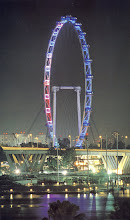The Doctor Says By DR MILTON LUM
Bone density declines with age, resulting in fragile bones and eventually, osteoporosis.
THE human body comprises of a skeleton that forms the framework for the various organs and other body structures. The skeleton is composed of various bones. Bone is made up of various minerals like calcium and phosphorus, and protein, which make the bone hard and dense.
There are two types of bone ?compact and spongy bone. Each bone in the body contains some of each type. Compact bone appears hard and solid, and is found on the outside of bones. Spongy bone is found on the inside of bones and is filled with holes.
In order to maintain its bone density, the body requires adequate amounts of calcium, other minerals and vitamin D as well as hormones like parathyroid hormones, oestrogen, testosterone, calcitonin and growth hormone. Vitamin D is absorbed from the food consumed and is also produced by the skin in the presence of sunlight.
The bone is in a continuous process of being broken down and reformed or remodelled. During this process, small areas of bone are removed and new bone deposited in its place. This enables the bone to adjust to the different bodily requirements.
Remodelling affects the shape and density of bone. When a person is young and growing, the bone increases in both length and width. When a person is older, the bone does not increase in length but may sometimes increase its width.
As bone formation is greater than is broken down in the young adult, bone density increases progressively until about the age of 30 years when it is at its peak. After that, bone breakdown is greater than bone formation, resulting in loss of bone density. This small amount of loss continues for the rest of life. If there is an ability to maintain an adequate amount of bone formation, the bone density continues to decrease, resulting in the bone becoming more fragile and eventually osteoporotic.
Bone loss increases after menopause when the ovaries stop producing estrogen, which protects against bone loss. A little bit of loss of bone does not usually cause problems. However, excessive bone loss results in osteoporosis which is characterised by compromised bone strength leading to an increased risk of fracture. Although the bones are still of the same size, the outside walls of compact bone become thinner and the holes in spongy bone become larger, thereby weakening the bone considerably.
The condition of a wo¬man抯 skeleton depends on two factors ?the amount of bone attained before the menopause and the rate of bone loss after.
Bone ailments
Osteoporosis is a skeletal disorder characterised by compromised bone strength that predisposes a person to an increased risk of fracture. A person抯 bone strength is determined by the bone density and bone quality. Bone density is determined by the peak bone mass and the amount of bone loss. Bone quality refers to the architecture, turnover, damage and mineralisation of bone. Bone density is used to measure osteoporosis clinically.
In all Asian countries, osteoporotic fractures are increasingly common. The impact of these fractures is tremendous. There is a mortality risk of about 25% in the first year. The quality of life is also substantial. About 10% will be bedridden and 25% wheel chair bound. In addition, there is chronic disabling pain with effects on patients?emotional and mental lives. In 1997, J.K. Lee and Khir reported that the incidence of hip fracture in Malaysia was 90 per 100,000 in those aged above 50 years.
The initial signs of osteoporosis are seen in bones that have a lot of spongy bone such as spine, hip and wrist. The symptoms of osteoporosis do not appear until a lot of bone is lost, thus explaining why it is called a silent disease. They include backache, pain, decrease in height and slight back curvature. When there is a fracture, there will be pain, tenderness and deformity.
Risk factors
Osteoporosis is three times more common in women than in men because of two reasons: women have a lower peak bone mass and the oestrogen loss at menopause. As women live longer than men, there will be greater reduction in bone mass.
The factors that increase the risk in women include:
Ethnicity. Caucasians and Asians are at greater risk. In Malaysia, the Chinese have a higher risk than the Malays and Indians, with Chinese women accounting for 44.8% of hip fractures.
Family history in a first-degree relative
Slender build
Low body weight (below 57kg)
Natural menopause because the protective effect of estrogens on bone is lost. Menopause is the biggest culprit in the process of bone loss. Premature menopause (below 40 years) aggravates bone loss.
Surgical removal of the ovaries causes a sudden decrease in estrogen resulting in rapid bone loss unless it is replaced.
Tobacco smoking.
Excessive alcohol and caffeine use.
Low calcium intake. Calcium slows the rate of bone loss.
Lack of exercise. Just as muscles become stronger with exercise, so do bones. Exercise increases bone mass before the menopause and slow down bone loss after the menopause.
Eating disorders like anorexia nervosa and bulimia.
Medicines like diuretics, steroids, heparin, anticonvulsants and immunosuppressants.
Types
There are two main types of osteoporosis ?primary, which occurs spontaneously and secondary osteoporosis, which is due to another condition.
There are three types of primary osteoporosis: postmenopausal, senile or age-related, which occurs in both men and women; and idiopathic.
Post-menopausal osteoporosis is due to the lack of oestrogen. Although bone loss is gradual in the years leading up to the menopause, it accelerates at menopause.
Women can lose as much as 20% of their bone mass in the five to seven years after menopause. However, not all women are at the same risk of developing postmenopausal osteoporosis. Those who are most at risk are the thin, white/fair skinned and/or with a slender build.
Senile osteoporosis results from age related calcium deficiency and/or vitamin D deficiency and an imbalance between bone breakdown and formation. It was found in a 2005 survey that about 49% of Malaysian women are vitamin D deficient! Senile osteoporosis is twice as common in women as in men. Women often have both postmenopausal and senile osteoporosis.
Idiopathic osteoporosis is rare. The cause is unknown. It occurs in children and young adults who have normal hormone and vitamin levels and no obvious reason for fragile bones.
Secondary osteoporosis occurs in less than 5% of cases. The various conditions that may cause secondary osteoporosis include: chronic conditions like kidney failure or liver cirrhosis; endocrine conditions like diabetes, thyrotoxicosis, hyperparathyroidism and hypogonadism; and other conditions like nutritional causes, multiple myeloma and cancer.
Dr Milton Lum is a member of the board of Medical Defence Malaysia. This article is not intended to replace, dictate or define evaluation by a qualified doctor. The views expressed do not represent that of any organisation the writer is associated with.
Monday, January 26, 2009
Bone Osteoporosis - The Silent Disease
Labels:
Health tips
Subscribe to:
Post Comments (Atom)
































.jpg)

.jpg)

.jpg)











No comments:
Post a Comment